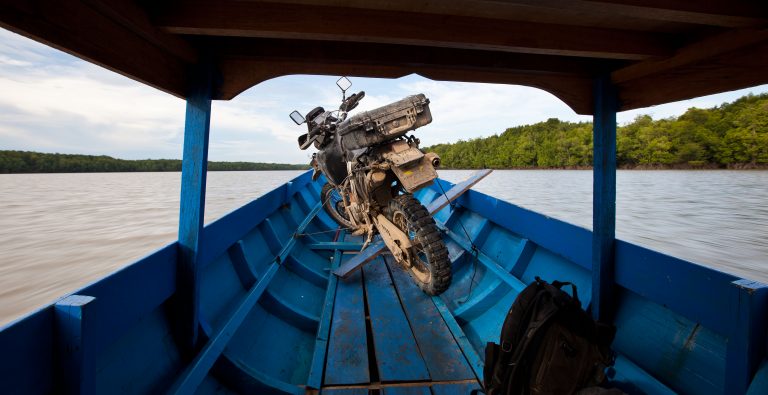Australian rider Rob Armstrong takes us on a tour of Indonesia, and highlights how you can ride it yourself.
When I set out on this trip it was initially supposed to take me eighteen months to ride from a small town called Wollongong on the south coast of NSW, Australia, all the way to Iceland. I spend six years planning it; finishing a degree in mechanical engineering, working in underground coal mining, preparing and modifying my 2003 Suzuki DR650 and getting banned from the internet at work for looking at sites like ADVrider too much. Then on the 9th October 2011, I hastily packed almost everything I owned onto the bike and started heading north. It’s now been two years and three months, 38,000km and I’ve only made it as far as Malaysia. The final destination is still Iceland, but the route and the time frame is now anyone’s guess.
A big part of why it’s taken so much longer than I had initially anticipated is Indonesia. After having a few minor mechanical issues that slowed me down, I quickly came to love the place and the people, eventually spending over ten months there. What follows is supposed to be less of a travelogue and more of an introduction to motorcycling in Indonesia, in the hope that more people visit this island nation with a slightly greater understanding of what to expect when you arrive, more respect for the cultural differences and greater appreciation for the beauty of the nature and the people.
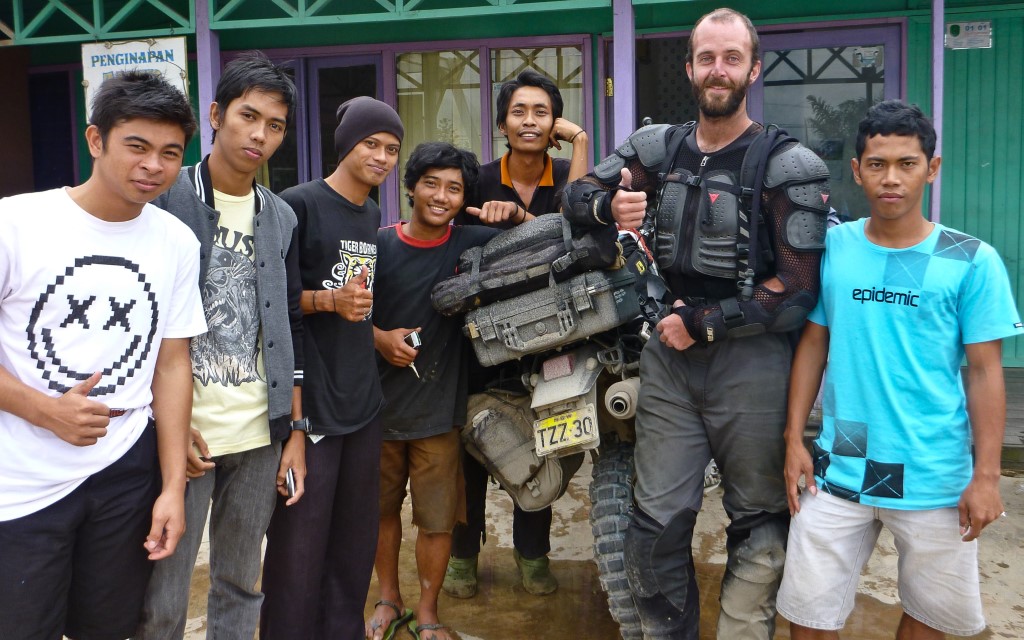
The people
Indonesians are nothing if not friendly. They are full of curiosity, particularly when it comes to foreigners. While some are chasing money, the majority just wants to practice their English or make friends or maybe even find an attractive husband/wife. Whatever their reasons, Indonesians are generally happy, if not a little shy (all the serving girls in a restaurant will sometimes disappear as they argue over who is going to have to try their English skills out on the foreigner). Armed with an English to Indonesian dictionary you can quickly master all the standard questions that get asked like, ‘where are you from, where are you going (although this one feels invasive at first, it is asked with genuine interest), how many cc is your bike, what religion are you (it doesn’t matter what your answer is, as long as you believe in a God of some sort), how old you are and whether you are married or not?’
Being the biggest Muslim nation in the world (population wise, with 256 million people) may be of some concern to anyone that takes mainstream Western media as gospel, but I can assure you that it is a waste of time worrying about it. The majority of Indonesians are about as close to extremist Islam as I am to being an albatross; the local alcohol is consumed en masse, I received orders for pork products when I went to Singapore to renew my visa and, despite feeling like every tenth house had been converted into a mosque, it seems like only about ten percent of the population ever attends them with any frequency. The main reason religion of any kind is so prevalent in the country is because the government bangs the Islamic drum constantly (although recent scandals involving government officials, alcohol, prostitutes and bribes seems to be weakening the importance that Islam has in politics).
Riding in Indonesia
Standing by the roadside, Indonesian traffic looks like total chaos, and if you think you can just jump in there with a Western mindset, chaos is exactly what will ensue. Indonesia’s road and traffic conditions are as varied as its languages (there are 742 different languages and dialects throughout the country); more remote areas are often void of traffic and have road conditions varying from non existent to almost brand new.
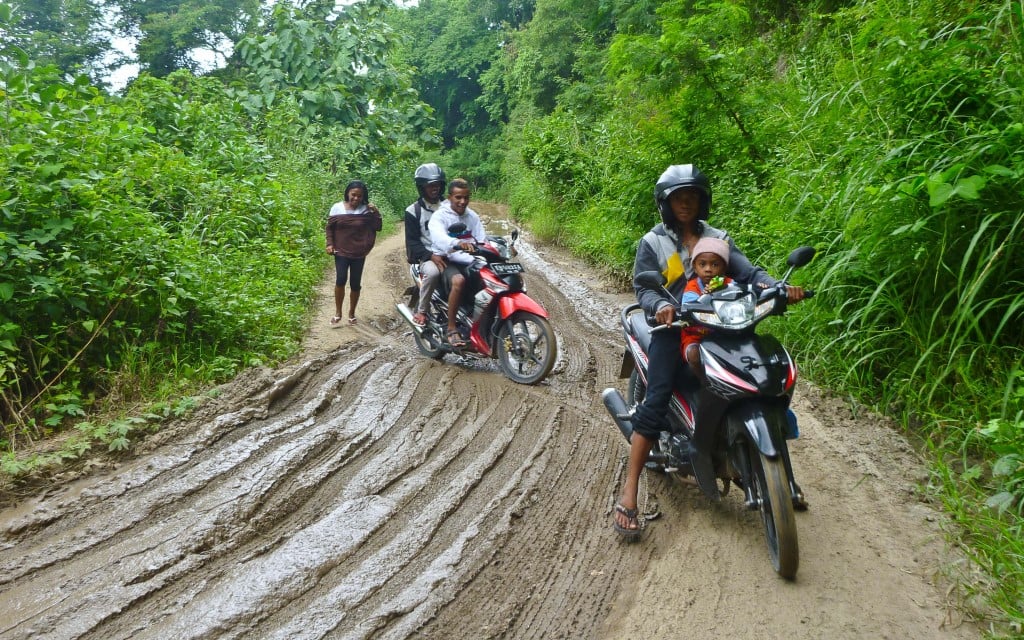
Known locally as bensin (solar is diesel and you probably don’t want that in you bike), petrol is sold for about £0.24/litre through the state owned petroleum company Pertimina (there are a few Shell stations about but they are few and far between and don’t enjoy the government subsidies that the Pertimina stations do).
Once you reach the front of the sometimes 100 bike-long queues, prepare to get treated like royalty; climb off your bike, remove the fuel cap, let the pump attendant fill it, then pay them at the pump and off you go.
More numerous however, are the roadside petrol vendors, run by entrepreneurial locals’ who buy petrol from the petrol stations, transport it on the back of 100cc motorcycles in quantities of up to 180-litres, and display it in old one-litre whiskey and soft drink bottles mounted in wooden racks by the roadside. Most locals sell for between about £0.27/L and £0.38/L, depending on location and availability. A word of warning: Indonesian locals near the border with Timor Leste will sell for £0.54/L if they can get away with it, because it’s still cheaper than in Timor Leste. They caught me out with that one!
Despite all the stories of corrupt and dodgy police, all you need to do is spend a little time somewhere like Kuta in Bali (aka little Australia) and you quickly realise that the people telling these stories are actually breaking the law by not wearing helmets or riding without valid licenses; the police merely enforce fines on a sliding scale according to the amount of money you happen to have. In ten months I only got chased down once, and that was for going the wrong way down a one-way street, paid the ‘fine’ (£19 instead of the standard £3, which is still a pittance compared to what I would have paid back in Australia) and was on my way.
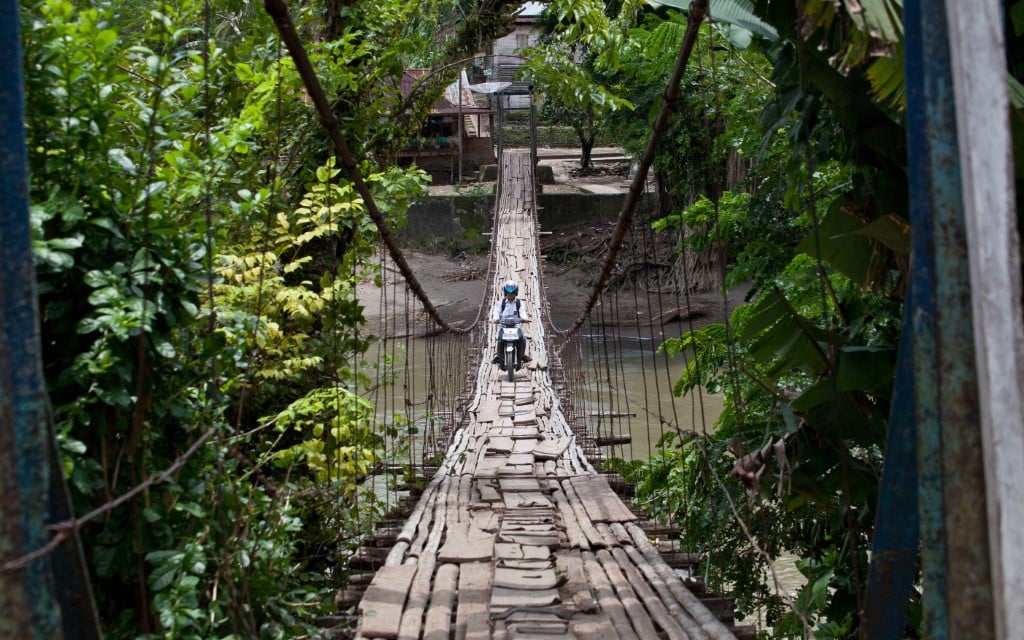
The Ferries
With over 17,500 islands in Indonesia, riding the ferries is inevitable and an experience in itself. The ships aren’t exactly up to international standards, which results in hydraulic lines patched with motorcycle inner tubes and cable ties, while the shallow draft on most of the fleet make them highly susceptible to ocean conditions. One ferry capsized near Papua, killing almost everyone onboard, while another sank near Bali in less dramatic circumstances. I quickly learnt to prepare for the worst on the ferries, removing riding boots and changing riding pants for shorts, packing my dry-bag with hard drives, diary and passport along with my inflatable mattress, ready for use as a flotation device, ‘just in case’ (I still don’t know where the life jackets were stored on half the ferries I took). You can travel between most islands for less than £5.
Accommodation
Indonesian hotels have to be some of the most biker friendly hotels going. The cheapest I stayed in cost £2.70 per night and I got what I paid for; a single mattress on the floor with a fan screwed to the plywood walls and just enough space for my gear and me to stand in, while the shower (a bucket of water with a scoop to wet yourself) and toilet was a shared affair down the hall. The best was £19/night in a fancy place with double bed, air conditioning, flat screen TV and faux marble bathroom with bath, shower and hot water. Prices can go all the way to £165 and above for a decent place with secure parking and all the bells and whistles, but more often than not I was allowed to park the bike inside either the lobby or the room, leaking oil and all.
For the more budget conscious travellers there are plenty of other options. Most churches and mosques will let you stay overnight for free, although I was often invited to come back to the pastor/imams personal house to stay with their family for the night. Many of the larger Pertimina petrol stations have an attached prayer room, shower/toilet block and some undercover space for long distance truck drivers to rest in, normally open on the sides to mosquitos and wind driven rain, but comfortable enough with a sleeping mat and light sheet. Police stations are not only free, but probably the safest place I slept at.
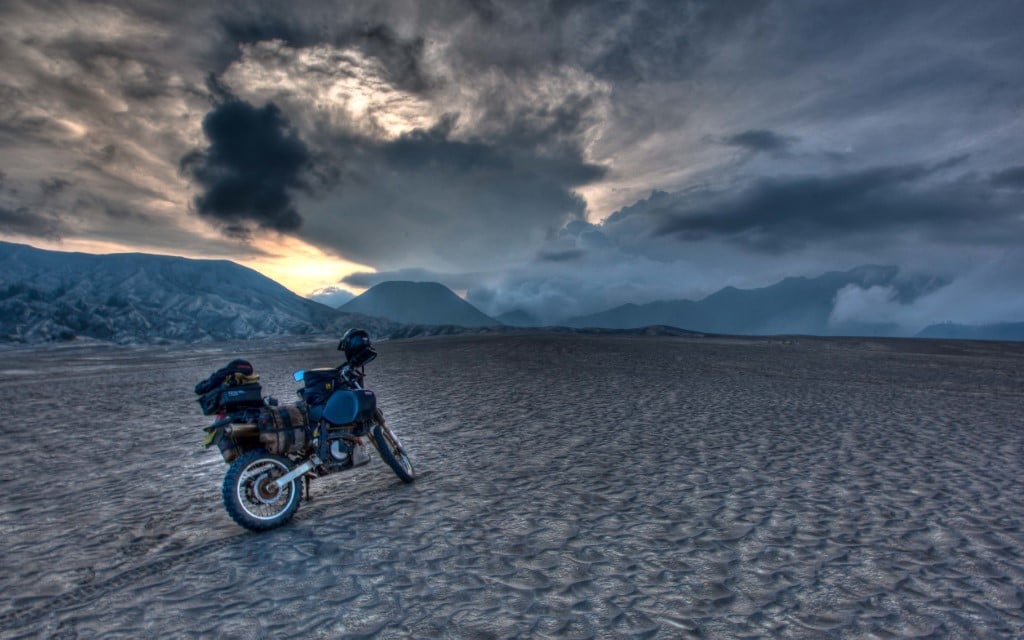
Also, despite palm oil and rubber tree plantations receiving a lot of negative press back home, they not only support local communities, but also provide ideal locations to pitch a tent close to, but out of sight of the road. Rubber plantations are best as there is usually less ground cover between the trees. But be warned, the workers are often up before sunrise and I certainly startled a few locals emerging from the tent half naked in the morning.
For those looking to experience the real Indonesia, attempting to camp near a village can often get you invited back to someone’s house if you’re discovered, which happened quite a few times and I always ended up staying a couple of nights, if not weeks in some cases. Trying to camp in a village will usually result in the same treatment, but before you go setting up a tent in somebody’s backyard, ask around for the village headman to get his permission first.
Motorcycle Communities
Anyone that spends any serious time in Indonesia will eventually end up hooking up with the motorcycle communities there. My initial encounter was a bunch of young guys on the street checking out my bike and getting photos of themselves with it. I spent the next two days hanging out at their houses, meeting their family and eating too much food. After that I was part of the Indonesian motorcycle community brotherhood, and it is one massive family. Although the local chapter of Yamaha V-Ixion (Yamaha FZ150i) was only about 30 members strong, their contacts extended beyond their town, into other provinces and even other countries; while the V-Ixion riders all stick together, there is no exclusivity amongst the small bike communities, and all of them acknowledge each other as they pass by.
Once accepted into this amazingly supportive community you’ll never be alone on the road again. They’ll find out where you are headed to next, call ahead to the guys they know in the next town, and when you arrive there’s more often than not a small group of bikers waiting to either escort you straight through town or to the nearest hotel, which they will occasionally pay for, or to one of their houses so you can freshen up before the rest of the group comes out to escort you to a fully paid for dinner of the local cuisine. Apart from offering food and accommodation (and even full tanks of fuel sometimes), I was given gifts and advice on things to see and road conditions ahead and learnt more about Indonesian culture than any guidebook will ever teach me.
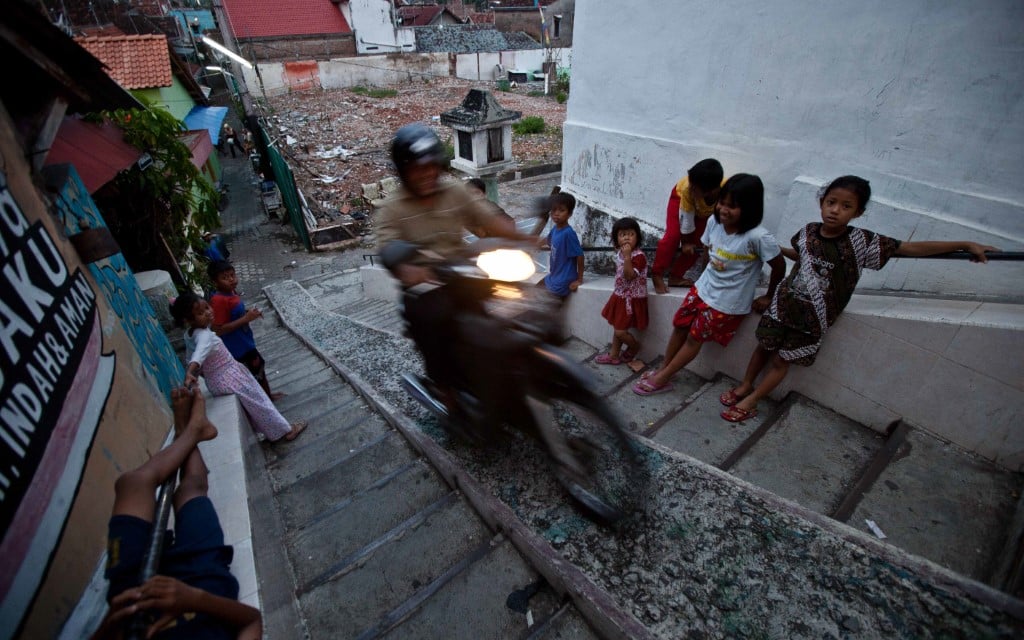
Other Considerations
If I could do it again and there was one thing that I would do differently, it would be my choice of bike. While a big, tall, heavy off-road bike is perfect for the high-speed desert roads of Australia, the heavy traffic and muddy tracks call for something much smaller and lighter. Not to mention that taking the DR into a Suzuki service center just had everyone there shaking their heads; big bikes are few and far between in Indonesia. This makes access to spare parts difficult and expensive (a tip on getting spares posted into Indonesia: using a local name and house address on the package will give you a better chance of avoiding exorbitant taxes and sticky fingers opening the box for ‘inspection’).
Buying a small bike locally and spending some time doing some basic modifications and preventative maintenance would be cheaper than shipping, easier to handle in the muddy tracks that lead to some of the best parts of the country, and will haves spares and mechanical knowledge locally available for one tenth the price of a big bike.
My final tip would be to forget almost everything you’ve heard and read about Indonesia from government agencies and travel guides. The Australian government currently issues two levels of travel warning for Indonesia: ‘exercise a high degree of caution’, and ‘reconsider your need to travel’, which is complete bullshit. The worst thing I had happen was getting my phone stolen. As long as you’re respectful towards the locals, travel in Indonesia couldn’t be safer. As for all the health warnings, in ten months of eating roadside food of dubious quality, I only got food poisoning once, and that was from a proper restaurant, and malaria out here is a bit of a non-event.
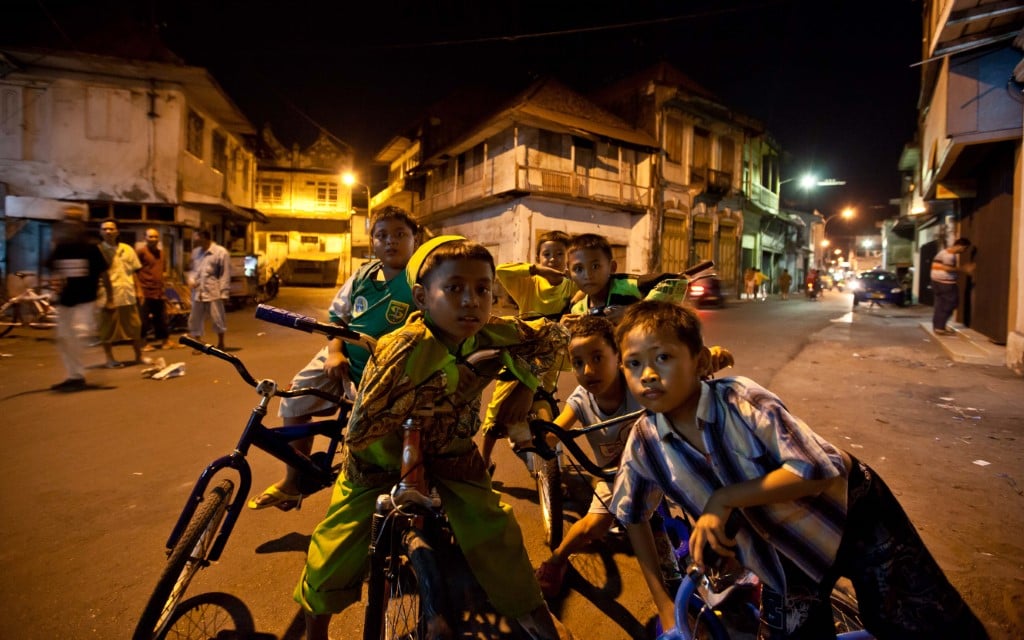
On the whole, Indonesia is an incredible place and it’s difficult to not fall in love with it. The locals here taught me how to travel with their humility, willingness to learn foreign languages and trusting nature. The only downside to having a nation full of such amazing people so early on in the trip is that the rest of the world might end up seeming rude and unwelcoming. Only time will tell.
Island Guide
Timor and Flores
West Timor and Flores islands are sparsely populated, Christian majority islands, perfect destinations for adventuring to places that few tourists ever get to see. Unfortunately, I moved quickly through here due to a chronic oil leak that could have spelt disaster at any moment. The road conditions are relatively good and traffic sparse, the majority of which are trucks that have a tendency to drive around blind turns in the middle of the road, so keep to the far left. Flores in particular has some astonishing roads and breathtaking scenery. Highlights include: traditional whale hunting at Lamalera, the three colored lakes at Mt Kelimutu, spider web rice feilds in Roeteng, Komodo dragons on Komodo Island.
Bali, Lombok and Java
Lombok and Java are two Muslim majority islands that sit either side of Hindu majority Bali. With a population density of 940 people/ km2, Java is the world’s most populous island (average population density is 134 people/km2 in Indonesia, but nearly 60% of Indonesians live on Java) and the distinction between separate villages has now disappeared. Gaps in the traffic are filled with motorcycles, scooters and bicycles ridden by young racer boys that only slow down to talk to the beautiful local girls, dressed up and wearing high heels, who often ride side by side with friends so they can chat as they go along. Ten year old boys ride themselves and their younger siblings to school, while my favorite, the old men who look as though they’ve been riding around aimlessly for the past thirty years. Highlights include: Sulphur mining at Mt. Ijen crater, riding through the inactive volcano Mt. Bromo, the Lapindo mud volcano, and Borobudur and Prambanan Hindu temples.
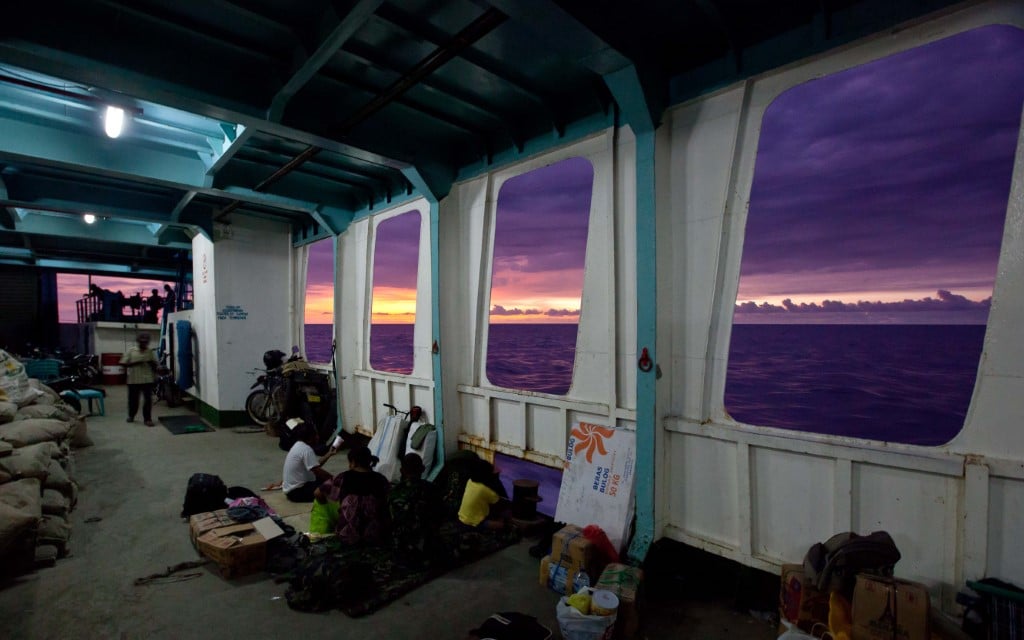
Sumatra and Kalimantan
Sumatra and Kalimantan are considered the wild west of Indonesia, with most Javanese having a story about someone they know or a friend of a friend that saw either something supernatural in Kalimantan, or was robbed blind by highway bandits in Sumatra. Fortunately, the closest I came to supernatural forces in Kalimantan was getting food poisoning from some bad prawns, while in Sumatra the closest I got to getting robbed was having my riverside camp surrounded by six local men who had me very tense, but ended up inviting me to stay with them in their village. That’s not to say those things don’t happen there, but they didn’t happen to me. Roads in these areas aren’t as well maintained as other parts of the country, with large obstacles in the road normally marked with foliage. An obstacle can be anything from a crashed or broken down vehicle, to a waist deep pothole or half the road washed away, so don’t take branches on the road for granted. That said, the north west coast of Sumatra has what is probably the best and most empty highway in all of Indonesia, having been recently built to replace the original coastal road after every single bridge for over 100km was washed away in the 2004 tsunami. Highlights include: Equator crossings, Lake Toba, Banda Ache tsunami monuments.
Want to do this?
Getting there?
Return flights to Bali are upwards of £600, but that is with a decent airline. Flights to Jakarta, the capital are a little less at around £530.
How long does it take?
Riding the length of the Indonesian island chain as Rob did – West Timor to Sumatra – is over 3,500 miles, with it possibly to do it in three weeks, though a month, or ideally two months would allow time to explore more of the land. Extensions on visas can be granted at various locations throughout the island, most commonly done in Bali.
When to go?
The wet season is from May to October and is actually the best time to visit Indonesia, though prices can be higher.
Accommodation
Cheap guesthouses and lodgings can be found for as little as £3. Major cities have the big chain hotels. The tourist hubs also have a great deal of accommodation, for all budgets. Campsites are absent. Wild camping is possible. As Rob did, ask villages if you can camp in the village.
Paperwork for you?
Thirty day tourist visas are granted on arrival at all major airports and sea ports. It has been possible to write a letter explaining why you might need longer, resulting in 60 day visas being granted. For more information see; www.indonesianembassy.org.uk
Paperwork for the bike?
The cost of taking your own bike out to Indonesia – including the need for a Carnet de Passage – is probably prohibitive for most, unless you’re coming in from the Australian end, in which case it’s around AU$300-400 to ship a bike from Darwin to East Timor (East Timor is independent, West Timor is part of Indonesia). The other option is to rent a bike, with a Kawasaki KLX 150 available for as little as £5 per day.
Is it for you?
Compared to places such as Thailand, Indonesia still offers plenty of opportunity to get off the beaten track. If that appeals, then go for it.
Photos: Rob Armstrong

